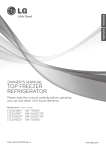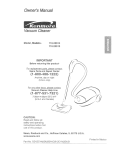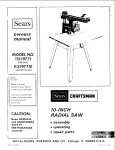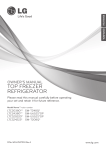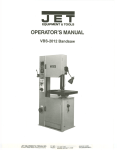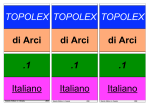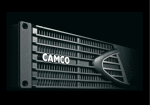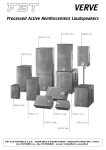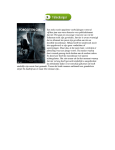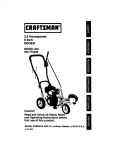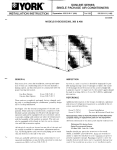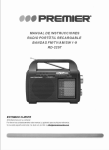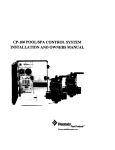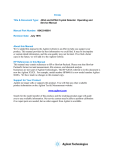Download Accutron Service Manual Series 214
Transcript
ACCUTRO
Service Manual
^-^'7
('>
,
-
.to
BULOVA
\
.
CONTENTS
page
Foreword
1
,.,.....,^.-^
Special Toola
and
..^-v.-.,*—-."^..-
lj]qiiipmcnt
,...,.,...*.-......-.-.
Mi<TOfl<:opp
ACCUTKON
Service Kit
S
Equipment -..,--.-;..*-..,.
Rate RecordeF .,.,..., .^. ,.,.,..>
CleaniTi^
- - .
.-
-
- .
-^
-
.
,.»...,
DJuifTiosis
Points
^.,
,
How
Hov
Chedc Powar
to
.
. ^ ^ ^ ^ ^ ^ ^ . ^ . . ^ ^
6
.,.,,,-.
S
..f
Ejcptisi* IiHk'KiriK
,-.
.,
^..^........ 11
Mis^hjinism
Inniwji'tiijii
IB
-.
and Adjustmont .,.....<,. 14
„
Pn)CVdMi'L\'> for T>ijTjiKsriril>!y
.
.
17
.,
IS
-
low to Ittniovc Hands, Dial and Dial Trjtm .-..,.-.....-....
How to
Itpmove Ooil iind Turk ARHciubly
^. *..,,.,.- »-
21
Oiling
23
.
.
,..,,......,...'.-..-.- 24
,
Keplaccnitnt of Coil and Fork Asacmbly
Hepla<ietnenL of Dial Train, Dial and
,.-.
Hunda
GaEinK he Movement .,,----,..
......,,_.
I
Infornialion
and Hints
for the
ACCUTRON
Repairman
30
Parts Liat
,..-
ill
Q IHD,
SS^. igB9 Hjlon
"li" vc
rcfiistf^EJ Iijjleirflrli^ of
InlUnrullDn tmljunnO
InlnnrullDn
tmljunno Ir UlM
Il>l& DiuKJel li Bair\l an »\z \^m{ r'ntiui;!
rlkE liiikE
rhe
llukE
Dftnrirm THr rmlrt
Dftnrirtjj
nulr
1;^
ivhivliI
mihc (liitfiiFS Jl jny
ttjIcIi C^miriuy,
m
LrK, All tIjIiIs iBstneti
S4
3e
rodrat
"flUinV4," "ACCUTBDr*." "ttATCHWASIER" aitf
24
26
27
28
RcEul'ition Following Repair ...-,--.-.
CapfTlBliI
18
19
Cleaning
Procedun-p Tor ll*!asapmbly
lUI
10
..,..,,.,.,._,, 13
---....
Chockinp- thu Train for Frt^edoni .,.
I
9
.-
Movement
Chi^'kin).^ lUitittnmic Cirruil
Indcxiniir Mi?chBni:^ni
9
,
Cell
to 0[iCTi Case and tlexnovu
Kvpii\idhtn
riow to
,.
-..>...^^.... ..-
I^rocodurcEi Tor Tofttin^r
fi
5
.
Spi^'ft]
2
3
HUlOV* WATCH COMPflHT,
iiiMaDlE
nllliDiir nvlirc
InlainiDlicn
linit
IhC.
FOREWORD
It takes years to train
any watchmaker
a watdiniitker
iJiouJd bo
abk
an ordinary watdi. But
to repair
to learn to service tlie
ACCUTEON
Tiiovemeut in n matter ol" houi'S with the Hid of this manual. All the
infotniation a watchmaker needs to perform the diaKnostic and aErvke operations on ACCUTROtJ ih eontiuned Jn this manuiLl; study it
thoroufihly.
Tiiere are certain
ways
in wliifh the jiervipinf^ of
ACCUTBON
diftera
fnini familiar wiLtetimakin^ praetires. In Uit firut place, tlitrt is
injci'apity
JTLethod
in
for preventive maintenuiide. Secondly, su esitremely
<tt diajpiosifi
dt'LermininE the
u^ad lestin^i:
ciiu.^e
There ate twti Keneml
mi
jjrot^ise
has been deviaed, snd should be followed
of iht' malfunction.
arejia
of operation in the
AOCUTRON
movement:
aud
the Mechsuioul cfimponenta, consistin).^ of the indexing mec'hanism
the p,ear traiT^; and tho Electronic and ElectronuLjfnetrc cemponents,
consiiflting of the Power Cell, electronic circuit luid tuning; fork. The
purpose of tho method of diuffnosis
liic^ili^e
Jis
de^nbed
in
Ihin
rnjmual
Ia
to
the Mourcif of trouble.
mechanism, which trjinsmltii tlie motion of thp tnninff fork
and f<'rms a moat iinperUiril part of thi; Mi?chanicjil
area of the ACCUTKOK movement, cotitains parts lao ainall ttmt their
Tlie Indi'xinK
U' the rioar
ti-jj-inn
fuiidieninK ainnot be cheeked with a InufH?. f;nnaeqiienilyH a muTOscopc
be used for thia puriJO^e. If the micresco]»ic ejcftminatiun dt^clDHOS
need for adjusirnent, it can umially be accoaiphshed with tht: lower
Tiiaffnificiitiun of a loupe
nffitil
With tho
exyejition
i>f
the aboven ihf wirvicinfl; of
ACCUTRON
yiinerally
and operahoiiH which urc familiar to the watclimakar.
Thifl manunJ has been written to nive you all the information needed to
service the bajsic ACCUTRON movement (Model 214). It has been arnmffi'd in a way which will be of maximum value lo you. Additional
Information or assistance an >ipecifie problems is available from Technical Sales & Services Division of the Bulova Watch Compiiny.
utilizes skjllft
AND EQUIPMENT
Vitcroticope
The examination of the operation of the
indcTci^Lj;
criticil chi'ck in diog^'^^'ng trouble in the
index wheL'l
cxlreniely amall {2Ai}
\a
teoth which are
are -IS
!i
mm
,1)3
mm
square by
microJicope
mm
is naiJGafiary
in diam'-ler)
The jewels which
ii.])!ul.
,0(1
mra
mechaniszn
ACCUTRON
and
ongflfie
thick, Thest^ dimgnEiiima
is
the most
timepiece.
The
i^ofitains 30fl
with thia wheel
;iri: ntj
Hmjili thai
to obtain ih-^ lovtl of niBgnificatum required
Ut t^hock the runrtioniiifl; of the indexing mochaiiirii".
Any
mif^roticupe of reasonable quality
ia
sati^rjicE-dry,
wiiki
field;
autli(FrI?,od
|iHcH
iiiiria:hl
T^uhiva
Kiilovi]
imiir^E^;
Wairh
Note: The typif^l
ifLV(>
2
ini:hi^9
ih
21^
Watch
or mptallurjiTiral miprostriipofi are not auit-
biolrjffioal
h;wi) umail
l.ht^y
Ikld.'it Jihiirt
by the on^neerinR stnlT of the
disvjrnojii.'i and to Qurvice the
tiinepieco. These tools ara induded in the new Authohavu Iwcn
dteiiginjd
Service Kit,
A
special triplepurpnae drctric Test Set
:x,
A
molded pJusLie Movement llolder
A special Locking-rinR" Wrench
An Index Finger Post Wrench
Each item
will bo -described
(pages 3-5) and its use fully explained and
manual covering diagnoais and acrvic-
illustrated in the seftions of thising,
workini? distances
kit
t.
A.
relatively low-
(.Company, Ine. to r>errorm
ACCUTRON
ACCUTRON
rlMd
3.
ii
invi^rtod Iuuikp^.
Hpttial tools
Eulnv.i
it
fairly
adw|uat(> for this purpose.
ACCUTRON wmcc
Pour
;
wrurWiim diintannj. Your
Materijil DiairibuLor -sUnks
'"MiiToloupe" wUii^h
aXik TorthiH us& Ix^c^mi^o
Und
lewftt
;l\
thut
prf>vldtid
meetfL the followiuK ai^-'ciCn-jitions; 2<)-i^0 di:imeLerH maKfii^'>C!ition
disosEcmbfy and reassembly-
test set
Thp Teat
Set, illustratod in Fig. 1, is
ACCUTRON movement.
an
unit in servicing the
iMsezitiLiI
TliE Test Set ia required to per^'orm three very
important fmictions:
IL
1.
ifl
used aa a voltmeter to chtck the
ACCUTRON
Pijwtr Cells.
It is dn'jiifBiied to theck the current in the electtonic drcuit, to indicate
its oporaling condition. (Conventional liigli-reBiBtance microamme-
ters aro Tioi ^uitijble fur this pui-poae.)
3.
[L
pruvidea an yccnrate source of the rcdiu:ed volLaHo required for
the Jidjualment of the indexing mechanism.
Fi^.J
The
Te.iit
A
Set provldttB:
"newt" U" hold n
marked for proper
A
A
Cell duririp
nnjLer, readiinj either voJtfl
Viiiuep
3,
Power
insertion nf the 314
hy
arejui
The
nest
is clea.riy
CpII.
or micronmperep, indicalinp; th^ roiTect
"OK"
marked
Rotary Switch
4-])osition
U'Jitinj^.
Power
to?'
the Helection of the various teat con-
diiiona:
Pnniti-m J
POHJtiDn 2
PoBJtioii
Jt
- "rHRC;K
—
'
POWER CELL"
^'OFF"
"PF.AD
MICROAMPERES"
PoRltJon 4 - '^LOW AMPLITUDE", in thin iKjsition Iho Te&l ^b\ TJr.jVidoti an accurate boui-cc for thd redui.'cd virltauea required fur Ihe indMinJir tnechnnram adjuatnipnt, in butti the ai4 ;ind 21B ACCUTRON
movpmpntR jthp tm(> voltaucs an? not Iht ^amci.
4.
fi.
A
2-wirt lead, with a tab end nnd a plug end for atLtc^hraent to the
218 At'CLiTRON m<jv(:im'nl and movement holder.
A 2-wire lead, with a spring
ACCRUTRON movement.
A
clip
for
attaclunent to the
blutk screw, directly bolow the center of the
zeroing the meter hand.
movement
dial,
214
for
movement holder
Because of the unique cunslructioii of the ACCIUTRON timepiece it is
easentitfl thai a spwjal Mttvemont Holder be used. A apeciiilly desiRned
holder liaa been devclopeji Ip fit the ACCUTRON mtivtini'nt -.vnd Lu protect the tuning- fork and coil ftHsernbly dnrifig aervieinp; procedure, A
CLAMP-TYPE MOVEMENT HOLDER SHOULD NOT BE USED
WHEN AmUSTlMG THE 21 INDEXING MECHANISM.
1
The Movement Holder (Fiff. 3) is
used when retnovirg the fork and
coil
AESumbly.
One
side
of the
a
Movement Holder (ontains
"noet"
do.'^igned
to
receive
and
fork and eoil asBOmh\y. The Holder in koyi'd. us jihowii
in Fi/T- II. so that the movement
will remain in thp correct posiLim». llfling the Movement Holder
simpMfi&i the handling of tuning
Tork and toil module:^, and the
complete! movemeiit» during the
important adjustment aTid testing outlined in thi^ manual.
protcfrt the
The notch
in th»^ aide
of the
Fiff.
9
Movement Holder
ih dejiipncd to ac^eiit tho
and Voflap;e ^^upply !< Mm- mnvecorrectly utt^ch^ to the luuvcmtnt
sprinf? clip for att^ifhini.^ ihn TeKt Set
ment, Fig. ^1 shows the [jprinK
and the Movement Holder.
i;lip
Fie,9
loekinpr-ring
wrench
uf
ACCUTRON
Limepiece, it
of ihe coTwpjfiLy v^ Ihu back
l,hi'
convcnU<?nal kttkinE-Hne wrtnth tiuiy niti be ^iiitatilc for uijenins the
Gxse of water-rcfliatHnt mtideb. A special wrcnth, deaigiitd for this purpose, ia illustrated in Fig, A.
Bijcituee
index finder post wi-ench
ihp alipfninent of the
niiJi apeixifl] wrpiifli, illuetniled in Fig. D, ia usi^d in
index
lliij^ers.
It
pUa-cd over th« end of Uip itidf.n finpir pout nn the
jiud goiitfy striated to t'snt^jr tho indi^Jt jewel on the
\ti
fork tliiR,
index wheel by jilighlly liPiidinK
l.uniiiK:
thi-
indux fmgGi- post.
cleaning cquipment
Ultrasonic nl&amtiffof the
^l^echllni^yl^
^eftion of the
im the beryllium-copper index
wh*?e| iijquireK thi'
ACCUTRON
hIw
nwiil is stroiiK'y rerom mended. Thi' infinitfRimsU
of
thi?
muKimum
move300 ledJi
penetration
power ".Vflilable in ulLraaorde ewvitjitwi gereraLed by nirkel l.riinsdueErs.
Thv V/ ATCnUA^TKn DltiasonJe Wfltth Cleaner afl reiom minded- It
wan ujmhI eRtluaivuly during the development of tht ACCUTllON timepiece,
rate recorder
The true
rate of the
ACCITTRON lEmmg
retarded only On
iransistnnKod
amplifier, with suitable frequEiity dividfra, ha^ been developed by Bulova
enginccra to show this true rate. This ACCUTRON Ratp Kworder will
also record popular odd beat, spring driven and electric: watt:hes, liy
printing cumparativc graphs it will greatly assist in the ^aleR effort of
fof k ivin Ix'
t^juiimient spceilieally designed for that ]iur|x>se,
A
•^pei^io.]
fine timepieces.
NOTE: For
further InrnrT^niLLlon on the ACCITTRON Serviee Kit, the
Pi)wer Ci'll Tti^ter', the WATCllMASTER Ultrasonic Cleaner or Ihe S|>ecial ACCIJTHON Hate Recorder, write
ACCUTRON
to
;
TeehniuftI Siil&i
& !:5ervi(:<?fl
Bulova WELlnth Conipjiny,
Bulova Park
Fluahiny, N, Y, 11^70
N»L shown
In this fniblitntiun
Division
Inc.
DIAGNOSIS
Thft initial .step in the servicing of any timepiefe la a preliminarj de-
termination of the symptoms.
Let
lis
assume that a
ciJi^tomer ha;^ broug:ht in
an
ACCUTRON
timepiece
a broken trystal, catehing; hands or simitar
obvious defects, it is important lu obtjiin a -r^fiftr t^tatement from the
owner ref^ardinjj the s^iuptoms which uauj^eil him to bring: the ACCUTltON timepiece to you for repair. Such symjjtomE^ will probably fall
to you. I'niess there
into
is
one of the following categories:
1-
GainiDg or losing a few seconds pat day^
z.
Gaining or losing an excessive amount (one or more minutes per
week).
3.
Stopped.
Wc
dilTerentiate
and 2 because, unlike ordinary watches
where gainy or IiWrvses of large amounts can be corrected by reguhition,
ACCUTRON is so designed that the usual wearing conditions or cnvironnienUil ciTei'ta will rarfly affect liming more than a few seconds per day.
An ACCTJTRON timepieix: which gains or loses more than a minute a
week probably reqnires servicing, not regulation.
There
is
between Nos.
1
one symptom that you fJiould look for in your preliniinary exani'
ination: if the timepiece is stopped, be sure to listen carefufly to deter-
mine whether
or not the characteristic
hum
is audible.
The mcUiod of distgno.^ia lyjnsiflis of procedures whereby you progrL*sjiivdy narrow down the areaa of posiiible malfunction. Having determined
from your own examination or the cuatomer'a description whether: (a)
the timepioee is riinning, (b) how moth it is gaining or losing, and, (c)
wht'ther the hum i.^ audible, you arc already on your way toward localiKttf the (rouble. For example, if an ACCUTRON timepiete
brought in to you^ and upon examination, you see it is not running but
the characteristic hum is audible, you can conclude that the eleftronic
circuit is operating, and the fork is vibrating. Under theijo conditions, [f
ing the source
is
the Power Cell voJtage is proper, this means that the sourtL' of trouble
is probably somewhere be3'"ond the fork perhaps in the indexing linkage,
or in the gear train which connects the indexing mechanism with the
hands. On the other hand, if the hum is not heard, this is an indication
that there fs probably some malfunction in the Power Cell, in the electronic cirti]it, or that the fork is mechanically blocked. The procedures
shoivn in the Servicing Table on the next page Turther narrow down the
possible choices until the tiorreet source of the trouble is found.
;
This table, which is self-explanatory", covei-s most nf the servicing situations that will normally arise. The Jirat eolumn li.^U the symptoms; the
Becoad colunm, the possible sdui-eeft of trouble which could cause this
particular symptom, the Ihird column (Jetaila the procedure that you
should follow in delerminir]g which of the possible i^ause.i is the correct
one; and Ihe fourth column rista the corrective steps tu be taken when
the malfunction is isolated-
f
BEoause of tht uiiuKual and siimewhiit unfamiliar nature af the ACCUTRON mechaniam, thorc are <;criain arpius in which cKtreine care .should
POINTS:
be exercised. AUenl.ion
is
talktl
lo thot.e precautions in the
various
applicable stttion^ of thid nianujJ, but in order tu emphasize their im-
portano? Ihcy aro
lij^teii
ae-iin
below:
1.
In removing th-? hands, care must be tiikcn not to turn the center
second pinion forward, or force it backward, since this will daniage
the indexinj^ mechanism.
a.
The post, finger, and jewtl assemblits on Lho tuning fork (the index
finder), and on the pawl adjustinE bridge (the pawl finger) aie very
delicate. Handling of these assenkbli<?s should ije kept to a minimum,
and should be done, when necessary, with j^reat cue. If either finj^r
is damased, or if either jewel is separated from ita finper, the entire
assenibly muist be repljieed- The jewels cannot be re-cemented or the
fingers replaced, except in the fa.etory,
a.
teeth on tho index wheel do not wear away unless the train has
been blocked hi some manner for an extended period. In this ease,
The
be worn olT by the constant rubbing of the indes jewel at
one -^pot on the wheel. Other than this, the index wheel cm only be
diimaged by imiiroper handling of the movement when it is not protected by the tirfiepiece ca&e. Unfortunately^ if an index wheel hjis
been damaged during j>ervieing (or by a stalled train) thij^ i;annot
be confirmed by visual observation with the recommended micro-
a
i.ooih cjin
scope. Furthermore, the purch;isf^ of a hig-h powe>- mit^ri^seope, with
suitable iixLurins
and
illitminal.ion fi>r
eKamining the teeth on the
index wheel, is rarely warranted bec:i.uge of the coat factor. If it is
suspected that the teeth on the index wheel have been damaged the
most practical solution is to replace the wheel arid pinion aflsembly,
Part No. 112. In this case, to avoid damagiuE the teeth, always
handle the assembly by the pinion, and in no oy^se graj^p the ed;ce of
the "wheel with tweezers.
*r
In removing the complete coil assembly care should be tahen to
avoid damagin]^ the insulation on the connecting wires, or piercing
the insulation on the coils.
6.
Du
not dettiagnetJxe an ACCl'TRON movement, or eitpose it to any
high-attength rnagnetic field. Aiiything which will affect the per-
manent magnets on the tuning fork
tion
c.
ftf
the opera-
the timepiece. (See page 32.)
tuning fork from the ACClTTItON movement, as in cleaning, keep the fork away from anything made of
steel: tools, containers, watch parls, etc. The magnets on the timing
fork are extrenicly powerful, and will have a tendency to aUract
Hmall articles, and be attracted to large arliclci, cilher of which may
ir necessary to rerfiovc the
damage
B
will seriously affect
the fork.
the teeth of the index wheel, or the indejf or pawl jewela.
7.
Never
B.
Never bend thu tines of the tuning fork. Bending this part will
seriously affect its timekeeping ability. If the tines become misaligned^ or the fork is damaged in any way, it must be replaced.
oil
FOR TESTING
hoif to check
2H
puwe^- eel!
Before any cilhnr work i-i done, dieek the Powor Celt to make Huro that
it ia functioning pi'operly.
thi^ liJick Iff Ihc cast' Lo remove any bofle material nerir tlie Cull
cover (U> prevenl iKo enlfanco nf riiK when tJie covnr ia rtniuvtd),
».
Wipe
».
UnEcr(?w the Cull (:om|>Qrtmenl cover uain]? n U.S. dime.
a.
Turn Ihe
4.
n^
a.
Vl-M-i:
tht
timepiece: over
Power
diamflli-r
down.
Turn the
r£-tar^
Ut'Afi thi?
Power
reading
flhftulji
If
the
it ja,
and thf Cdl
will fall out.
Cell in the npsL of the Ttst Set with Iht smaller
Bwiieh to
*-CHBCK POWTIK
Cell Volljiii^o
he
im
tlu*
in thvi "tll<" jitoji
PowiT
Cell
h
in
CET.l/'
HKhl-h-iixd
iif Ihi^ Jitak'
poflition.
aofile.
(1.25 to
The voltJijfO
lAB vulta).
aatiwfadury operaimR conditioiu
Note: POPF I'lPdriciU rontji^!!. lielween Power 1>11 and Tfr'flt Spt will
CMuee either a low reading i^r a. wjwi^rin^ iiidicatiim of mW vulta^e.
It vnn he readily avoided hy makiiifr rertnin that CiiW flurfa^^ea and
contad.inff points of the Test Set neat uiid dip jirn? clfan, TluhhinBr or
twiPtinft v- BUMputtod cell ijeVwet'n tht i:<>ntaelB while chetkin]^ volLntTi-'
in p;do<I prautlee. A wiLvttrinjf r^-ndiiig of volta^- ]» a-twii.yH an indicit*
tion of po<ir contaci, tud an indiratinii of a bad cell. Tpatiiitf should
iilwrtyji be done with Lhe authonKi^d AiXUTRON Test Sot "f with a
high-p&ii stance voltmeter (haviny; not leas than L0,O(Kl tihma per volt
aiBftaitJvity).
suehastheACCllTRON Power
Q'll Tcater",
only cellH impnnUd -ACCITTRON 214" (spp picture
above) im ihin nHHld timvpiete, CellH marked **ACCllTRON 218" will
not operate Iht SerieM 'Z\A movement, Substilnlw. sach as type JOO hearing-aid ctLU, should Tifrer Ife used since they may leoh and lieriously
damage Lhe mov^mrnL Their inlernnl conntruclion and eJcrtrolyte differ
CADTION: Use
from that
Not shown
in the genuine
211 celL
in this publicatfon
WHlNCJI
/to'//j
open
to
ctL'ie
and rmiiove movement
Using
flpeoial
Loulring-rinE Wrench. looHcn
Im^kiiig rinff.
lUniova locking Hna.
Lift fleLtJng handle
LifL
If
it.
(i(T l)a(*k,
ffflKkf't
Is
tti
aid in removing
bi?inE curoful to lift slraiEht up.
pulTocI
up
in Eifting back,
<Tf Kitaket rtynmrip in
anrj'
to
l>acft.
reinovu
il
iviat?, ft is
remove
mil
m!l'('^-
for Ihe rcBulnljoii proce-
dure,)
s-
"T
now be romnved from the
can bi' jia^tmiilislicd without tiikin^ Ihe movcmpiil iiul ipf Lhu hhsh, or
The: movi^ment citn
LiiHi?.
iRi'Kul-'ition
rnmoving the Pnwer CdL)
HANOLt
v'V^
10
regulation
TITE RASrC ACCITRACY OF ACCUTHON IS SO GKBAr THAT REGULATION
FOR MORE THAN A FEW PECnNDS PER DAY IS NOT KEQUlREU. GA1^JS
OK LOI^.SES OP AS MUCH AS A MINUTE A WEEit 1NDH;ATE THE NEED
FOR aEttVICLNG. NOT REGULATION,
ACCUTRON
regulators
The ACCTITRON regulators (see Fig.
them fiabier to rotate and to serve as ^
7,
page 12) are serrated
to
make
c^ilibration.
eadi regulator form 7 divisions (J prtijections and !1
of these divisions is equal to 2 seconds per day of
coiTection; in utimr woi"(3Sh rotating one of the regulators ^ JistaiKie
equal to one division, i:hangefi the rate of the ACCUTKON timepiere by
2 seconds per day. KeK"l*it.ion fflr aa little as '/^ second per day c*tji hn
made by rotating <me of the regulator.^ '/|, division. The junount that a
regulator is rota1.ed can be j^asily gauged by reference to thL' dot ou the
top of eych liup-
The
serriLtioiiE of
indentations).
Eadi
Tn order to allovr greater latitude for ri^gulation, either one or both of
the regulators can be rotated in malting a correction- for CKample, a
corri'LLlon of 4 seconds per day can be mailo eillier by rotating one regulator 2 divisions, or by rotating tsch of the regulators 1 division,
Sinoe there an^ 7 divisions on each of Ihc rcj-ulatftrii, and since each division Ik equal to 2 seconds per day, it would hi- impossible to make a correction of more than 28 sw:'?"^* per day, even if both regulaEora were
originally set ail the way in one direction (which they will not be).
H
how to regulate
1.
Open case
a.
With
f pjxff*
10, stepg
1 through i)
!i pi^gvunxl atioh, rotate one or both of the regulators
{see Fig.
7) u suffitionl number of divifiions and in the direction neceaanry, to
make
the ruiuired torruttion. Rotating
contk^r of thu
movcnuint
will
cause the
slnwBT; T-otatinff a regulator toiuar-d
c^UEe it to run faster.
a.
For
jl
n'p:ulatoi' awii)/
ACCUTTION
t!ie
center of tho
reasflenrbly foflnwin^ rogulalionj refer to
TO REGUUM'E 7 SfCONllS PfH
DAYSIQWEH, MOVE Un\iH BrfiLILATOR ONE niVISIUH OUTWARD
page
from the
I.o run
liniepie<:i?
movement
wilJ
27, Htepa 2 thru 7.
TO RESULATt ? SECONDS PER
m
FASTEB,
UUTOR
ONE
MOVE
T.fTHER
[llVISlOn
RE&
INWARD
AS sfiown.
OBSERVE THE SEVEH "UrVIStaNS"
ON LM>1 nEQULArOR
F\ff. 7
13
dierfciibfj electronic
diTtiU
Tho ACCUTRON movemenl iUdf h yiui I.est fixtuii?, jmd the b^l
motonK of tefiting electricul ;uici rnech-mJcjil "yipHbiliUe^- Ttstrng tht
elwlronic drcuit. requires jmi to:
I.
Take the niovcnicnt oul of Uie taae (refer to pagp J0>. Inspect for
and eliiniriutt< mcchi^riit'ji] 4>verIoadinff and/or obviuUA tuning^ fork
blocks^.
a.
Place the movtiiimit, dial
the
Power
On
i>ome nnHicIa ihe
With a Pnwi-r
{
+)
diii.li^
i*nd
in
thu Movcmtril Holder with
the sidt of the holder.
m
nuUh
hands wiH have
m^t
Cel] in thi-
end of the lead
clip at the
The
mie down,
(Vll rucess adjavent to t>it
of
Lhi^
tq be
removed.
Ti'st Sctn c<inrivrt
the spring
movement
an that the i-enter fin^fer
is touihrn^T the contact in the center' or the Pftwcr Cell recess.
oUier Iwn finger^ (-) should be sjninit ti^M \n the pillar plalp
Ui
the
Turn the Test Set ruUu-y switch
posil.inn. Tlif
Test
r<>wev Cell
till iiiid
ifi
now
to
"FEMAU MlCltOAMPEKES"
thmnKh
tonnecLerl In ihe nioveiUL'nt
the meter will give
Ji
j-ejidinp of turienl oil the
be neoessary to tap the movement liEblly lo
start the tuninc fork vibijitrng after tonnectiQE the sprjug clip.)
The current leading Khouid he in the ""OK" area of the acJile (4.5 In
thi.'
Jeft-hacji acskv tit
7,0
s.
microamptTe*),
If the
the hatiil
Vi-
—
movement
exposure 1"
ing
may
—
is warmer thjin room temperature
an a result tif
direct i-ays ni the bench lamp, or from l>eing held in
this may cattsi- n higher thim nnrniuJ cui'reiit. If the raidthi-
sli^Iiy hJEher than the "OK" arei*. kt the movement sit for
horn- at n*om temperature, awiiy fram the dire-t mys of any
is
limip,
and
nftrim
NOTE: M^hanicql
cheek the purrent.
c^u^ed l»y improper adjiLnlm^nt und'iT any
lauGh as linl) which rMlricta or work-joiMl* the fork mny als^j rMuh
ifl nbnorni^ Teit Set readlnm. UhIhs the circuit ia
"open" (current ttoAa
wmj. it ifl rarely imea&ary tn repUce the Coil AAaembTy during repair on
ACCUTKON", \t the tntdnff fork vibrates, an ACOUTRON prohlom is not due
to n Tualty €uil Ai^Hi'nibly, HIithVT than nnrninl i?urrpnt, v^krinble current,
irrpjtulnr timcke*-|iknic. elt, lire (with very rare exception! Always cauaed
by olhiT facturi
iiilErfeTPiii.r,
fMcUtt
how
l~
r
to expose indexing twrhaitism
wtn
I
'
REmflve
a
uf tty
Juia bi
EliB
budge,
*<»
afEty
Wi^a
r^
Fig. 8
18
indexins/ vwchaniHUi
—
hh-^pection
and
adjii^tnie-td
THE CHECKING OF THIS MECHANTSM SHOULD NOT BE ATTEMPTED WITHOUT THE USE OF A SUITABLE MICROSCOPE.
A LOUPE, EVEN OF HIGH POWER. IS NOT SIHTAELE FOR THIS
PURPOSE.
The checking mid udjustment of
the
ACCUTRON
inflexingr
mechanism
isextremeiy important to its optration. This ia aceomplisheij by cioseJy
controlling |he alignmcnl; ^ind the di^pth of engaj^ement of the index
and pawl jewels and t}ipir intei-rolation. First, the alignment nf bf»th
jewels h checked and, iT rieee^s^ry, -tdjusted. Then, the engagement
of tho index jewel la checked and, if ncce.^aary, adjusted. Finally, the interrelation between the two jewels is adjusted.
Details of the step by step procedure
nete^ary
to properly accomplish
these adjustments ore to be performed in seqneni-e, as follows
I,
LofiKen index
wli'>el.
guard scitw, and tuni index guard
-I'S^'-sy
Troin index
Do
damaKO
uul remove, just turn onl of the way, l>eing careful not to
index and pawl tinj?X'rE, which run through tliK guard.
Tighten serew (seeFig.fl).
B.
Looking at the movement imder the micioscfipe, mitke snre thai
pawl jewd is engaged with index ^vheel. ('r}ii; pawl jowfl mii.sl be
engaged with the wheel, so that
duriu^ Ihc ehetk for engage-
—
**i
the index jewt?l
Step 4 belfiw
thi; wheel will
not back up.) Tf Jt is not engjigt^d, r'otat<^ pawl bridge <jam
until paw] \^ br^mght in contact with wheeL
mc-iiL
—
the microscope. t:heck
be sure thai each finger ii*
itraighl, tiiat both jewels are
centered on wheel (that both
are neithei- too high nor too
low) and that I'ach is perpendicular to wheel f.^ee Fig. 10).
If index jewel [s. noi i;ehtered,
this can be corrected by the
use of the Index Finger Post
Wrerich, which fits on the index
finger po^t (loejitod on one tine
of tilt tuning fork). Phidng
fhe wreadi over the end i>f the
post, QCfttly sti'ess it in the
proper direction to center the
iiidt:^ Jewel on the wheel, by
Ij'nder
ttt
post. The pawl
be centered by liending the pnwl linger post with
liendin-g
jewel
Fig. 5
14
eafi
tweeaev.'i.
the
If either jewel is qoI peiptnditular
Ui the plane of the wheel (Fig, 1(1),
this Win be eo/Tccted
by
ffraspiiijr
the jewef finger (and stresa iimiter> close to the puint where it is
pinned, witli tweezers [be careful
n&t to timck the Jtfwel (taslf) and
twist injj slijjhtly.
Observe the stress limiters on index and piiwi lingtTs (see Fig:. 10)
Check ttjat no more than >^ of the
length of the streais Hiniter is in
with the index or pawl
linger. Also, eheck thrd end of
i--<ii.
tontflct
streaa limiter
is tio
from index ur priwl
bend atreaa Jii^iiter.
more than 3 Ihickneaaen of the
K
flnger,
jdjuKtinent
is
fltress liniiter
nete^saryn
uw
away
tw^ieiiers
to
Fip. 71
The lowor
KUifaturp nf (he Ind.:* ruid
their rrsKpectivc
flnffurfi,
aliewjj
lui
niL'nL 13 nirely retitiired- It
wilhnut bn^ikinK
lli(i
on
puwl
T'li^.
nni.it
Ji^wi-Im
1
1.
)k>
iwirafkl
Ln
Hitrrtn'tioii oi' Ihis iili^n-
tnn ujinnlly br un^drnplisht'd.
i^mt'iit iittitdimw ths jewel le
cJsinff ronsidernhli' cjirn. (!^l^^p llie linHr.T iiRiper
l.lie
with
if
necessary,
l)y
cHcr-
Iwc-e/i'rs,
eli?se
liri>rov
and press lightly cut the end "I the j<?wol (iir index fiiiKi-r)
in the pruper diret'lion with pejjwoud, In correel. ihf alii^njenl tiT jewel
and finjrer,
to the jewel,
4-
Check
1,]]^
eng^jri^nient
tii
tile
index jewd by pnlljnu back the
tine of the tunjnif ferk tii which
the index ttriirci' is iittftched
(see Fig. 12). (Joiml the nombar of teeth Ihe index jewel
"drops off" before index jewel
ml lb iLwjiy from the wheel
J
(flt:e
Fig-
13),
TllE JRWFT.
SHOULD DUOr OFF
^
TO
TEETU,
of
teetJi
If
the
numher
W
smafler than 5 or greater
ft the enj-jiKemenl can be
modilicd by gently Ijcnding the
la
Lhan
'I
FiB^IS
Stzvasl|mlLprreatDn'Ehliii>dirLlLre4t
IS
index fingur iJind^U'^'MaliniiUrl
near tiie i?rnl where it ii* pinntd,
toward or away from Uie wbeol.
the md of Iweeaarfi or a
(This opcraLjon la airai-
iiania
iiffdli?.
Lur to that
feprinff
IhiH
i.iijurtliinml,
iiiirnt L^htiulcJ
Vie.
B.
r
Jx-ndinjt
t»f
hitir-
Afi*-r
near ihu atml.J
Ihi'
I'liKasp-
m.
UHHCii
brid>tB
|)ftwl
li^ck
strew
allKhl.ly: Ibmvo pjtwl bricljfe
Diaenffjipp
pletely
cam
pjvnt
Uaht-
at'it'W
a.
(e^t
Ttiii\iVK\ui&
ijt:
by
pawl jowel com-
TJkljitliiK l"'wl
cam
imlil Lho
bn^lP^
is
at ils
on'\ of tin'
mnjimMm
nway from
laiiL^e
hrklpe
dia-
index
Then, ex-
lln:
whoel
(ai^o
amine
lhi> iittwi jowf'l utidt' r thfi
Kig. Iri),
microscope:
iouehinsr
ntit
mo IT
thickncaa
ahould not ht*
fndvx wIibpI. nnd
it
th*>
than
unfi-lmlf
away from
iU^
the whs-wl
Thin di.^tnnfp mi^y In- uiljuBted
by pretsinff airnlly in or oiil im
Ihft pawl ftiifter, us [l*?srribK*d
sbovp in fldJuBtiiiji: the index
f
IMDLrtWl
9.
With Teat Set at "low amplitude" tie^hten pawl bi-idEC lock acrew
and chetit the tightneas cif the pawl bridp^e jiivot sere*, lu assure that
ACCUTRON
train
continue tik run. If it dors not, the adjustment must be
aj^Hin. At this point the adjustment is complete.
made
the bridge
rigidly clamped in positiun.
is
The
fihinjid
D.
1
11.
Dieconuect the Test Set sprinff
ciip
from the movement.
Looai^n index (cuard screw, and turn Indejf guard back iiito position,
being tureful hol tw damage the index TrntT^r or pawl finger. Tighten
screw. Using Lhi^ microscope,
tip the miivemt!nL intu a suitable position and observe the
dearaiiLt between the index
finger ivnd the guard. With the
guard in position^ tlic index finger lihoujd pass Lhntugh a point
^lif^htly ipjiide Ihe tenter of the
fllot In till? jfuard (sec Fig. l&)
The indfs tiiijirr should nut
touch either Hide of Uip
it
does,
bend
tlie
^-lot,
guard up
U
oi-
down
slightly to center the
index fingern making ^ure alau
that the ]f:l.wI Hnger 6i>e& not
t<iuch thi'
IS.
Replace
guard.
siifety
Fiir.
bridge ivnd
nkt'ckhif) fhe train
ts
aiifeLy bridgt? Jicmvi.
for freedovi
This rhetrk in used in the pruc^durrs derturibed In the SRf-vidiig Table, to
determine whtlbt^r theri^ is any mechauiml bloi^kape of the giyir train.
freed<>m of the train could bf diecknl by siniily moving one of thi:
geara with a Iwpcicrn oi' ncedfe, but Lhere is danger of damaging the
The
index nnd pawl ilngi^rfl or the index wheel tef^th. Thua. tho safest and
most convenient methud of checking the train freedom iR to pludi, ur
"twang" the tine of the inning fork in which thL' index fingj-T in aitiichedWhen this is done^ the fork will vibrato for a few seconds and this
if it is not biocked.
moticHi will be tran^mllted 1o the train
—
The motion of the train can easily be SL-uiit with a loupe or the microscope, by watching any of thi: gears at the time that the fork is being
plucked.
If im
motion of the jrears E.i apparent when the fork ia plucked, this is
;i blocked train, assuming that the inde>iing hnkstge has alclieifked. as is called for in the Servicing Table procedures.
cvidenco of
ready be^'ri
17
PROCEDURES FOR
DISASSEMBLY
htttr
renuti'e fumth, dial,
fi.'
ami
i3PinLWiiir£
3.
RtiUDVe ground &tfap
infuit
2.
can be piai^il
i
^?E.
/,-'
SE^mr,
mm
In
m
nnK-
holder.
RBmavi? the two dial haldlnsnuts, Ei
acE lncallon
MfWiiE viHEL
dial train
snup
1^
^hown.
^r
flpniQve hand^,
2.
IfQinnve di^L
3.
Rtiiinui;
4.
R^mnvf runan
pltimn.
5.
I'GiFiaVfl
setting
wheel
i]iiiig
hand rernQver.
hnur wEie?L
mm. s*\k
.8^
iprlngi
iind
minule nlieel spring whicli are held
tiy
nheel spring scrPWr
[inE setting
^miNIl VflEL
S.
Hemove mlnule
1.
Jinmovf
nlieel.
ielti'ng whvti.
CAOnQN: Dn
jidI
tLrn
pinion foiwanl, ui force
repliicjnc
hands,
b^ ttth
the ind»ing Tnechanism.
16
rtcand
it
center
Tract'^aiil, In
will
damage
how
to
remove
coil
and fork assembli/
1' Placf aa\
(Ln^n cm iiiov?nL?nl holder
and leniove safety bridge (See
Fig. 9,
JJage 13),
*. loosen indet
guafti ECrew,
index j;u^rd away Troni
Da nol
rcirovi^, jj^t
*dT, being
and luni
iiider:
«he?l.
lum oul
dI the
no! In
i^arefu]
da^nags
IndE^ and pawl tfngers, which
IhinufEi EhG guard,
- Tbf^
dial
4. RenmVe
by
om
run
TighEen ^c^ew.
up Dn mav^m^nl holder
clinch britTge, which
^liDck bridge
held
i^
«rew.
s- ffsnwwe th? tno lunlig fork screws.
B- Fl^ce
7-
dial ^aiai on
\}iing
bdW
mavi^pnt
s m^lal punch, tap
linJder,
ehi
the
q) Hi? luring fork IhinuBb hola
prciuided in pillar plalfi until forh lb
disGngafied-
B' V\tk up mnvemenE and holder and
Invert zo tlial the
ihe bottom.
11
under the
movement
is
on
Hemoie holder and place
ffloi/eiiient.
19
how
to
reniove coil aiid fork
9-
(ronfd)
asi^ci/ibltj
Llf\ fDfk a\ Wts
^ass ani ror^te up-
paiting In a uerUcfll pQ^ttlai
10, Rcmauc
tbD coJJ l?ad n^Uinor plals,
f1- Loner
12'
13-
fork
ruiuvine; thj^
qF
^iilt
U^
111
WIRL
OH AUJAtlNT
TIIIIJ
hrf
Iijc^Iiiijl
NdC4
i-nfiinsci
Tit HO(HT.
phlo
Hif noldi
pi'finaoil !,1rrK
j'-ttmbly
in
edgB
rwnpilJnr
mnur-
1Nfl
iNr
Troni
haldEr
lurrbfi
fpJfc
Hid
inuch
ti^^
lite njjfnin;!
4i»1ed
ruclvD fhi
flhspnibJv wlU>-
r,n\\
perm 111 rnn
n^^cmbfy
fhc
b
cTp^idnui]
on
palnli. dJl-
Tprt
iirid
plnlo
|>illdi
11
pU'ih iltiwn
1ri
!spvei,-il
III
cnRn^Mif! Ih^ r»'\
<mn
1hi»
Hi?
Make uire
(I'jc
1
ntiivi'mcnl
.nl
lnv^rl
L'lll
11
toIaFciI uniil
ihv
lioMer,
iiL'nl
T*.
and
Ijimly billed
in
jia
iD« p\acei
i\\
0!i5cnibly.
plrrt0
ligldi-r
1^
pULe
of'ttie pillar
thi* IidIIdetIi
lliu
E
liver lilt nrnveirrnl
Hid
WMflCil
Irom
llie ItulLlcr
^n^^LDll
Jllu^rrdlp^E
acbM
nol
Wjlhniil lunilriB I'l?' ^^b nioufiniFnl,
TliD
WHIN
Oa
bu|
cBififullv,
llu four cnht form tcrent.
ffpinovfl
rcmnue
SPECIAI CMiL
icr^s.
held bf |wq
Triiitb Is
imii-x
\\a^c\
Tg
Hin piU^r pf^la
in
during rrniDViil,
5-
Tlip
mumnirnl cur Ihcn be rpmovnl
Nxim Hip
hnltTirr.
d^^GmblT should
\t\e
nmipincnl
fhe
t>[^
I
[:dJJ
tit
licldpr
11
and lark
plecf
unle^Jj
It
in
It
nci^GrLMni lo rertove Inr clE^ilnp n{
iBplacpmpnr,
in
whicN
CJm
llir
can be disnipmhlcd from Hit
colls
fnrli
by eejilly aprcadjn^ Hie cnlla apart
In some mov^mentt the I'oil lead retmttf^r ptate i^ imt vjieit. Its tkis case, the proceduri^ for removaf.
of the coil and fork nssfinhfy is much nimpU^ merehj inrfnrm the above stcpn in the foUowiiig
order: I, %, 3, i, 12, r,, 6. 7, U, IS.
—
2X}
CLEANING
The following additional disasaembly
steps aliould be performed only
when
cleaning
is
Tiecessary
I' RemrjvE pattL bridge ai\a linger
amhlf b}
?S'^
\i
roroving two
pawl Ijiidge CMP
—
will
-PWiLiiicef
QTJUK
come
nol rhicadtd and
hudae
Dur *i1h Hip
ml
be I^ken
shnili]
sram nuiiiN
ii
m-
ns
^critwii
to
Cam
bend Ihe
pitwl Ijn^er.
2-
jenek hy
RJinnuL' The thfi DironK Ciip
p|p|rlVloj{
clflKd
hun/nnljl prc:;bLre |a Ihp
-^itie
[ill[]i.bin£
i^tnoiEo
nf the II-^hap«d ^pfJi>£,
Ihr
iprfni can thtn
1\a cao
of
FFp
JB'itel
bi-
liprlnits sJiDuld liD
v«i| their tau
a. Remiivn cantor
irpnci)
up,
lo
The
and
Alter the
iDriirjvfd
J0Wf1s I11VS hcfln
JA
Epring
IIiq
from uiidar Hie beiei.
reiMQVi^i],
I
he
ir^rh^agL'd Id prc-
In clr'arlng,
ti^eonj clulon. viliich
[idd bv IWQ clulon u:rtA5.
*' RennvQ cenler iiKond
waihei hY iNspInn
anil
UiWnt out
pinktn
wltlL
and
[viFB»r&
IhrAURli holn In Irpln
brld^d
!
RpniuvB InvrBr |Bwel
liDid
tlijfftNaemhlfi
of
Ui'-
wheei
ttniti
ii*
iunH'ctrni»if[f
puthr animary
plnTfl.
«hlch
it
bv nnn vrdA.
r'nuiiftfitu
Ultrasonic aiuipmtnl ia ntress^iry for ckaninR the ACCUTTION movement. Tt should be treated
L'xactly ;ia any llni> watoh. with onp exc-pption. The eleetTonic circuitn the tuning fork, and the
pHwl adjuring bridgj? akniild not
danger to delicate parts.
fit
deanfut.
m ultrasonic ettvipvivnt, because of the posaihility of
Tht
fork, coil, Jind pawl bridEc t^u be cleaned satisfactorily by merely dipping into a "benzine
cup" and then placing on a tissue to dry.
Care should be taken to prevent metal chips. whT<!h may be present in the cleaning cup or on the
bench, from being attracted lu ths? pemisLiient magnets on the tines of the tuning fork, Inspoct the
fork carefully after cleaning, and if this has cir^tirred, any particles that are clinging tt» the rnagnets can be removed with maaking tape. No particles should be left adhering to fork magnets.
21
OILING
following cleaning, the ACCUTRON movement
should be oiled as follows:
1-
oil
air
wheel pivQl)
iFiiJn
^rtd
can
a. U^jnc ^mall ollcj, llfihlly oil mrfacr
b^twi?™ toraler whrcl i3i[i duTth*
ipjinjj
aitd
bhoen
lor irtior
and
'ACCiriRdN
(vfH
InUu
l4N>[]i
li^ihi'd
or
ll-Ji
m^
taiii
^lip-dulcli
M wm: famr
i:n\\f,ii\
iiiUDduiTrtd
adiunlmDnl nT cannun
jiirlon-CDnEFr urbar
4- De[Lr«g
whorrl
icneh)-
iiluvpiLDril^
inn^lrudrDM
:iijnid
ur|
p-inl
nijiiLir.'iflrirr
til
un uen^
(sue jlluslriliDh uL
Novor
CJIUTIOH;
tor Indfli
»l^a hs-
whiiol,
ceiiij^r
^piinL; jikl ^li^p) liub
Irliitluii
wirit
pcEWaod
nllei, llj-hfly ail
bplflwin
»iitflr
iftliir^l
Btltk,
riKTm
*' Usirg
fiinflll
LVUler tvhsol
drid
ffluBtntJon It
MM.
HAUUnN
Dndfii?.
if
will
kTilr
DILLlOinV
23
ir
Be
cirirliit
aiiilcU
noL lo
lane
all
^st
BenEu
ml Urul iniirhti cenlcr bridge,
rEmair on
not be
oIIe[I,
!>riiJse
aud clulch faCB
FOR REASSEMBLY
following oiling, reassemble as follows:
1^ PeplaDS \oyva
1- Rppfsc? culler
pm-FHW.
CEHTEP SECUrCI
jen'el pidle.
pJdlDH
secojilJ
dnd
CWtQh
3. kEpl^ct cciltr uconil chalon sud
11^
two
scnitJ5.
bi disengaging the
Oum
la
Ifip
ijp
lip of
the
sprmg
berpL allortpng Ihe aprmg
op-
Tht je*ei
wn
Ihen be
placed [indci ihe ipimg and IBe
4- Rept^:t
push
t.
Sljde
all
p^hvl
lorked
under bead
bridge uoi.
way
[h?
(
(fJd
lip
nol
in!?
end
ol
pawf
bridge
:am jnd pMilkm
pa*l
^iuating bridge, beJn£ caieruJ not
io
damage pJWf
linger.
PepLact
Ilia
f^laceinent of coil
and /or^ iL^aemhly
t'f
^
Li
1.
nan «Hl and iDTk
BSWiKitr
tnio Uie
prtpsred ilali id Ihf fnoveni'nE
1»(iSh,
a,
PmiAB
I'm*
pWt owl
ihs
as-
plait tai'EC^ ^'T L" rnDVPment
adder.
Ih
pJ'lt will fHl drop
Difl,
Eiim Dv?r
AH
#r»B Ouwiflt hfllBE in tilt tiflth
Id »irUtflr Hit Utt lavnbl^ in tho
plDHpMc.
«U«]T«ry T[om oot
5f[Jt Ot
The
itiave-
vil Wfci lo T!ve Dihci placing
in Uv iJial-BdeHjp pfmiron
S4
n
replacement of coil
and fark asa^mbft/ (conf^d)
S- pJess atrnt iimif na
ie*f«t
evifflr
«
tK
HeplAU
vO
D^lx
in
ftun wil^
ptale
inn urcvL
loer coil
amS icrrwL
dIiEe
rmke )i/v
rwi
wLlJ
ilui
ni
into [i1it<
lf» dcliule intuld-
U dvBiitd
Ciffl
ibHiia
lalmi coll
« l<h(D
ipplf QEffniff 1 OPiT It
1M
rnt f wfa: avord coPtKT
win
loniUB
10
!
yht linti
.anrii iMffiE
f>- RiQlKt
tvk
thf l«v lufdtii
urmt
TllMKi
i-umyiii™:!
Dndge
acre**
4 IfH
ED *ibii1v
ima
Itic
ifitrHitil
11
in
Ckfln
Chrch 10
Qn
-
Kv
lbi1 Ivrk
1*41 ine ccHli HI
Uv md
iDUchmt '"d
canUcE itdh V\e
iri
llie
linei
tlHl QotWiiii
Iphes «1
mt
poinL
In models that have no
order- 1,
of fork.
S,.
coil lead rctiiiner ptaJc, the obi 've steps
J, A, a, Sr 5, 10^ 11.
Also in step
S.
Tnake
should he 'performed in the faUotciag
three i^ad 'rires do net tttneh bojic
sitre thi^
replacement of dial
train,
and
kaTida
dial
K
t-
Ifaordcmei oman
ud
'-.
dIJ,
"^
2.
.^"^
wtEh
^IbII
replKf EauDon pinion
BepLa
»l[ir^
ifherr.
3- BefiEKE mmuEc fhEd.
-^
*- ReplKf MMifii *h«l splint
"iin
S- Repface (»UT *ted,
<- RBpTKE dial*
MUHHIIU
SICHM
T' BFplKr
huidl-
KITIW imtL
CUTtOlf:
pmion
bit
lofwirtj.
revldciic
rvl
lEim
m
r«c»
budt
conEcr
tPi:ntd
<T
hiicliiiiiirt(
>i Qia wirt
in
damw
The indeiine inftzhanitm,
UmTlBlUE
mil* SUV
1- Aaplicf
1
^
"'"'
IbB
two dal holdin[ luts-'
<^ Rfp^KE £lDund i]rjp tnQ urtw.
»- Ch«l Thrt
; » 3 DHL
lF«
Ql
^fund
^>oiie -lurltCF
put UiBt
tf
strap
c^l
ti
Dollar
Ktatrj-
*for simpiicii^ of preBe»fu£ioyi the 'procedure of adding hands has bcsn combined ieiih other ddaX
side opcrahona.
practice ahoays replace dial holding nuts before hands.
26
M
X
cctMiig the
T
.
movement
inannieDt
Rpplaci!
Ihe find of The
hale prouided.
"SJiE
c^*
BflElj-ig
s
lU
fits
^
CEll COVDf
i'^ot
s^em jcdo
indicalHT in
provded «rUi a lDc3[fng
|]ut
PWB
CROWh
As an Jid
Uli^ttalion.
SETTING HftWDLE
RiNti
!
2- Bepl^ce pakEt
3. Replace tarX
LOMTING
y
IDOIIW:
»
ae
Hw
ewrarf
\iAi
Gi \nf
IntD a coTHpffiidiDi
»5H£r
mEdl
Ihc f a^p.
lurn la fpJMit tJiat tiz Mjuace
u[li!i£ sLcn
Qf Ih?
fl:fj£fi
end
HJHi
th? hole in Uif JEltirig ^ni?«L
S.
fi-
M sKii^
Replace
h^dte
Ifldipni;
CDirtL
rTng
and C|li3»
wjlh AEeDcTl.
7- Check
for
waia- reaisTifce EKlore
ralurrlna To ciHTmie/,
:f»P-^
27
REGULATION
FOLLOWING REPAIR
rctum a repaired ACCUTRON timepiece to the
keep time within one minute per month, with rare
esceptions, if iKe proper j'atilities are avaiJable. This requires Ihat the
timepiece be adjusted to h^e two seconds per day in the dial up poaitiDn,
tor optimum performance when the owner weata U In a normal njanner on
the Dvtside of the wrist. Wh^n the oftTier wears it on the inside of the
wrist, the ACCUTEON timepiece should he regulated to ffojfl two seconds
per day in the dial up position^ for optimum perfoi-mance in actna! use.
It is readily
OwneT
possible Lu
pre-reguliiled to
ACCUTfiON repairman hua access to a source of exact time, checking the 34-hour rate of ^ain or loss of a repaired ACCLTROX timepiece is
If the
relatively sin^ple. In this iuEtance* after casing the mover/ient,
it
is set
approximately on time iind its d^jvifttion from precise lirae rerarded to the
nearest ^/^ second. After allowing it to run dial np for
hours, it is again
BtHiipared with the time signal and the amount gained or tost " .-corded to
OieneajEst \^ second.
^
between the observed rate and -2 seconds per day (for
the outside of tHe wri^t) having now been established, the
eallbnited regulators cim be employed to maJie the ncrcesarj- curreftion in
rate l&ee Page 12), The effectiveness of the correction should preferably
The
difference
w^jin^ on
ap;ain determining the 2-1-hour rate in the difil up position.
Obviously, deviations of a second or so per day from the optimum rate can
be allowed, to provide timekeeping within the desired foionte per month
specitied in Eulova's guarantee.
be checked by
Hie difhculty in
obtaininfi'
time which
is
accurate to the second^ as required
for the above procedure, is nol: always recognized by the watchmaker. Conventional synchronous electric clocks are sutlicjently accurate for checking
conventional watches but may var>" throughoot the day from several
seconds fast to stivcral seconds slow. They are therefore unsatisfactory for
checking the true 21-hour rate of ACCUTKON. The Western Union clocks,
naed in many jewelry stores in the United States, are similarly unsatisfactory for cheddns the 2'1-hour rate of AGCUTEON timepieces. These
28
docks are automatiealiy correj^ted hourly from a "master" dock which is
manually set to a time signal provided once each day by the U-3. Naval
Observatorj". While they are always approximately correct, LTrora an great
as 15-30 secQDds axe relatively coramoiL The hourly "bteiiw" broadcast by
some radio and te^e^-ision stations are ntit necessarily correct to the second
and shouJd not be used for checking the exact performance of ACCUTEON
timepieces.
There are a few areas in tbe United States where a precise time signal,
acenrate to the second^ is available from the telephone company- Except
when auch signals are available, accurate time for checking and reguiating
ACCUTRON tiinepieces can best be obtained with a short-wave radio
recover- Such a rcctivcr can be used to receive the precij;ely controlled
time signals bruadtaat continuously from govemnierrt-operated short-wave
radio atations-
A
special Rate ReGjrder provides the most satisfactory solution to the
problem of regulating an ACCUTRON timepieec following rcpnir. The
repair and checkinfE prdcedureif covered in the preceding^ sections will
assure that the hands wiJi lum in esad synchronism with the vibrations of
the tuning fork. Measuring- the tuning fork rate wiJl therefore indicate the
amount the ACCUTRON timepiece will gain or fcse in 21 hours. This
measurement of tuning fork rate is readily made with a Rate Recorder
having a special signal pick-np device and circuitry for printing a clear
record, together with a very precise internal frequency standard. A Rate
Recorder suitable for timing the ACCUTRON timepiece is available frorn
WATCHMASTfiE Products Division of Bulova Watch Company.
Regulating a repaired ACCUTRON timepiece to the required rate {-^
seconds per day diaj up) is a verj' obvious procedure, using the Rate Recorder and the ACCUTRON calibrated regulating sy&tem. Rate measurement:? should be made only with the case tightly closed. Also, it ia good
practice to allow the timepieee to "settle" for an hour or more after last
closing the case^ before making the fmal Rate Recorder measurement of its
ntte, Thb avoids the small changes in rate which may occur immediately
after casing as a result of trapped air^ etc. (See page '52^ "rate recorder.")
29
INFORMATION AND
HINTS FOR THE
ACCUTRON REPAIRMAN
i'lliltpint^tt
DO NOT ATTEMPT TO SERVICE THE ACCErTRON MOVEMENT
(UTEIEU THAN HRGULATlON OR TOWER CELL REPLACEMENT)
WITHOUT A .SIHTACLE MTCROSCOPK AND THK ACCUTRON TEST
SET. CONTAINED JN THE REPAIR KIT.
exc/uinffhiff
viovements to carreet a problem
Bulova dot-B net roconiniein^ pxnh-ingc of movemcnis lo so\vv a customer'^
problem. The ACCUTFtON nuivornvnt, unpfotocl<?d by Lhc caso, au\ be
reitJJiy
whii
or itn rutnUoiiinK Hcrlously disturbed. Tim n-pHirfiiHii
the nocessury equipment nnd kntiw^odK^ ^** diafiriosc and I'tiKiir
cliunuK'-'d
lai^k::
ACCUTILON movcimcnL tan iviri^Iy satisfy 1h<! njalumer by awitdunj; movcmpiits, This usimUy results in two prablcro mqvis
menlit arjd one verv dfaHntisficii I'ualcimcr.
Iho trDub|*> witlt an
irreffular thnekeepitifj
ACCUTRON timekeeptnjt, where the timepiwe appears Ut jump fnat one dfty, thtm plow thp nest, are alniONl certnin indicaLion that Iht timepieco wnn rheiiko^i ap^ninst an inawurat*- time "Btandard."
Set disf uftsion on P.ijre 2S. A^r'riJ/fl ^jr -mrt^ the rr»r nitrnrr nf (hi- trtmtftmBr'f
protitpm in undiirntt>ad befoTi- attDiiiiiiina tn correct it by rejiairiitg the
Rpportii vt irrettulur
power
cell
cover cmitact apnng
Before jitlempliiig movement ropair^ always examine the contact Sprinif on
the Power CeJl cover Ui hi: cerUiin it makfs good cleclrical mnUct with tbe
Power Cell. Tliefto springs arc oi^crtflionally damaged by earcltssntss riuring
Cell repiflcenn?nt, tfiusinE ji problem which for tibvious reasons cannot be
corrected by movement repair.
rhaning
The
a routine part of nearSy every repair,
from the watchmaker's icnowledge thai optimum performance and
reliability can be expected only when lubrication is fresh. The performance
practice of cleaning a watch, as
rcKiiJlB
of
ACCLITRON
is relatively unaffected by the condition of the lubrication.
Cleaning will not uGuaJiy be required to restore an ACCL'IRON timepiece
to proper operaling condition.
30
oilinff
The
instrnctioQ to oil tparinEly is repcaU:d here for emphasis. Flooding
the varioas bearings tss xesuit in oil riuming onto the teclh of the index
wheeL In this in&tance, oil attrficts and holds any dirt or foreign matter
which ntay then interfere with proper operation of the indexIDE mechanism. This trouble ia rarely experienced if the bearings are
in the case,
oiled properly.
r&nioving
and replacing
the tuning fork
The tuning fork shonid never he pried
up,
during removal, by inserting
a flcrewdriver or other tool under the tines. This practice will "bruise" the
UJiually rr^quiring
tines and permanently aJfect tiie tuning fork rale
replacement with a vew tuning fork to leattire tiiuekeeping. Use the
"knuck-out" hole provided, to push the monntine tongue ofT the two dowels,
—
removing and replacing the tuning fork and coil assemblies, use care to
avoid damaging the insulation on the connecting wires which pass under
In
the faaae of the tuning forfe_
index wheel endsfiake
wheel pinion in its bearings can cause
the index wheel to fail to '^draw'" back reliably after each operation of the
indexing mechanism. This results in the timepiece gaining csressively.
While this condition is rare, it is good practice, "whenever theckiog the
movement, to perform the simple check which will detect IL With the
Insufficient endshafee of lie index
movement running on the Movement Holder,
attachCKl to the Test Set, press
on the index upper endstone cap jewel with pegwood. If there is no endshake, the slightest pressure on the cap jewel will cause r significant
incTKiae in the current.
functioTial check of netting mechanis-yn
Scadoaily niise setting handle and turn the crown back and forth nntil
minute hand moves, meanwhile observing the distance the crown liftsCrowti fnot setting handle) should lift at least Vi, nini hefore setting
wheel engages minute wheel and hjuids turn. If necessary, change to
longer atem. to correct inadeiiuyie di^aranee between setting wheel and
minute wheel, t^ase part identification given on page 27,
check adjusfment of hidexitig viechaiusiii after dixtlmg
good practice to check l^e adjustment of the indexing niechanism a/tfT replacing the dial and hand,'*. This ia because the adjustment of
the indexing mechanism can chcuge as a result of Ihe ^Ughtest turning of
the center aecond pinion when the h^nd is applied.
It is aluaiis
31
vmgnet^
partialty
demagnetized
DiafTDosis protfedift-es in Lho iirecpding servicixxg inatnictioiiB have not
covered the identification uf trouble cjntaed by dfm3£n«tized tuiitng fark
maj^ets. for reasons uf sLmpIificAtjfiiL Experienrt hss abowu that £uch
trouble is very rsje. If the movement current is within tlxe "OK" area of
the scale on the Test Set» thd nu^eta are satisfactorily mairnetized.
If the tuninii: fork
fork will
magnets have
lost
most of their ma^etiam. the tuning
to vibrate and the Test Set will indicate
ft ver}' higii current
due to a faulty eleetronic circuit. If the majpieta
have lost only a portion of their niagnetiam, the tuning fork may vibrate
but Ihf TchE Set will indicate that the current ta above the "OK*' area of
the scaie. In t-ach of ihvue instjincezi^ iT an excesaively hi^ current (and/or
fflUure of Iht liinlL^M' f^irk to vlljrate) cannot be corteeled by replacing the
cowuil*Jie coil asttcfnbly— try subslitutinjf a differerit tunins fork.
fail
—normally interpreted
a.*
ttm^et^ lifi.ve been detiiBgnetlzcct—the Cork muiit be
rotunied to Biilova for remnBTietixinff.
If the tuninfT fork
Tat€ recorder
The ACCUTRON hour :iJid minute hands are ateel. On some modete. depending upon tha lenaih nnd dtaifin of these bfinds, the tunini; fork rato
dungu aliffhtly when iJu- hands ar*^ near the tunin(f fork imijrnets. Vor
thfe rwiRon. it is gmkl prjultce to set both hands in the Ipwer portion of
the dial Iwfufe measuring the rate of an ACCUTRON timepiece with the
Hate EjMiorder.
case gasket repfnc^ment
The
tn
which ^i'mIk the wnter resistant case i^ serrated to provide a
amount of eui^hinninp for the ACCUTRON" movement in relation
jiarcket
definite
l-hi-
ca.^e.
Ipifiket if
Ni^ver
5Lib!<J.itu|,t<
a conventional (non^^errnted) w:iter reniatnnt
the original guJikeL j^ould rei^uire r^ljicement.
crystal replacevicnt
ACCUTRON timepiece is received for repair with the crystal
always check Ihc adjustment and operation o£ the indexing mechanism, whidi could have been deranged by any loterfcrence with the exIXfsed sweep second hand.
Whenever an
misfiing,
ewchoAging diat^
Interchange of dials to satisfy a customer's request for a non-j^tatidard
combination of ACCUTKOK dial and case is hazardous. Dial curvaturei
and bezel openings vary from style to style and different dialK are therefore not necessarily interchangeabJe.
32
y@
n
if.
H
.,:
• S *
*
-
i
*
'
I
.
z
ACCBTMW
[screws nol shown}
^
«
Self vnndHiE
mo^pmenl
{UJftwt nor tfiown)
comparittou of
ACCUTRON
icith
^Hf-whuiiufj
morcmmi
35
INDEX
tacHstyflrAta:unfQN
""birn
m
II
?
n








































